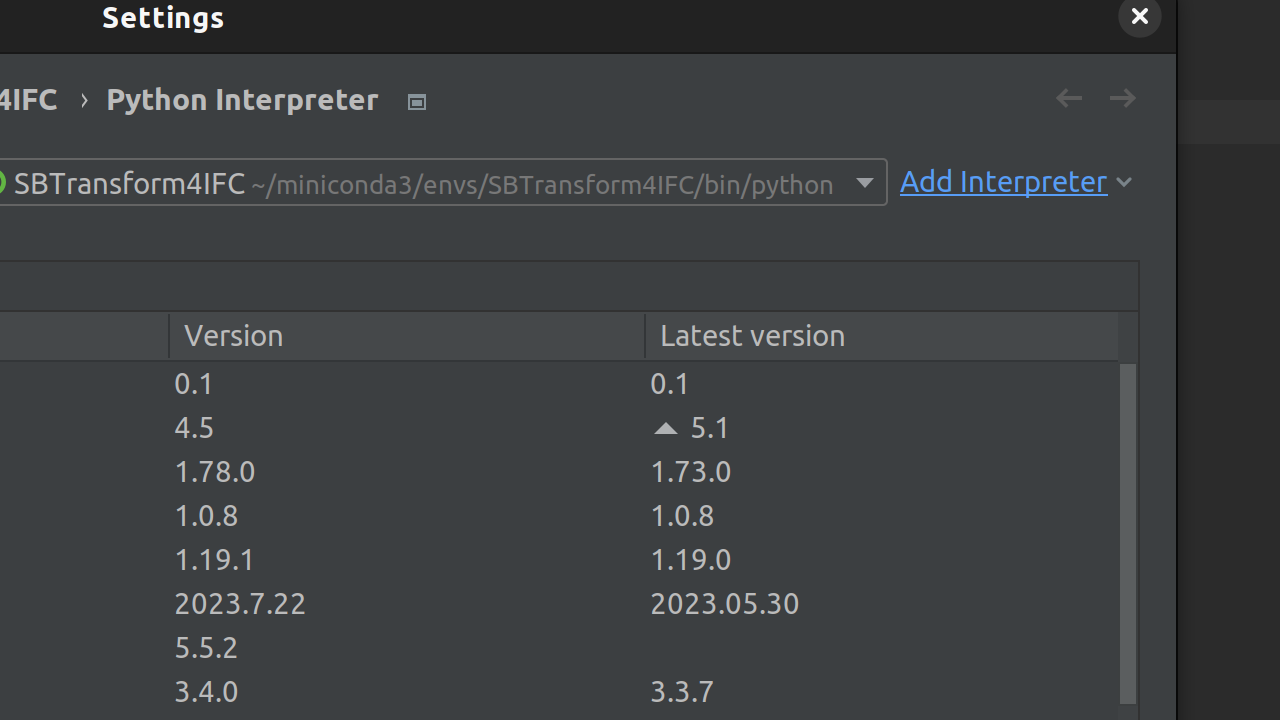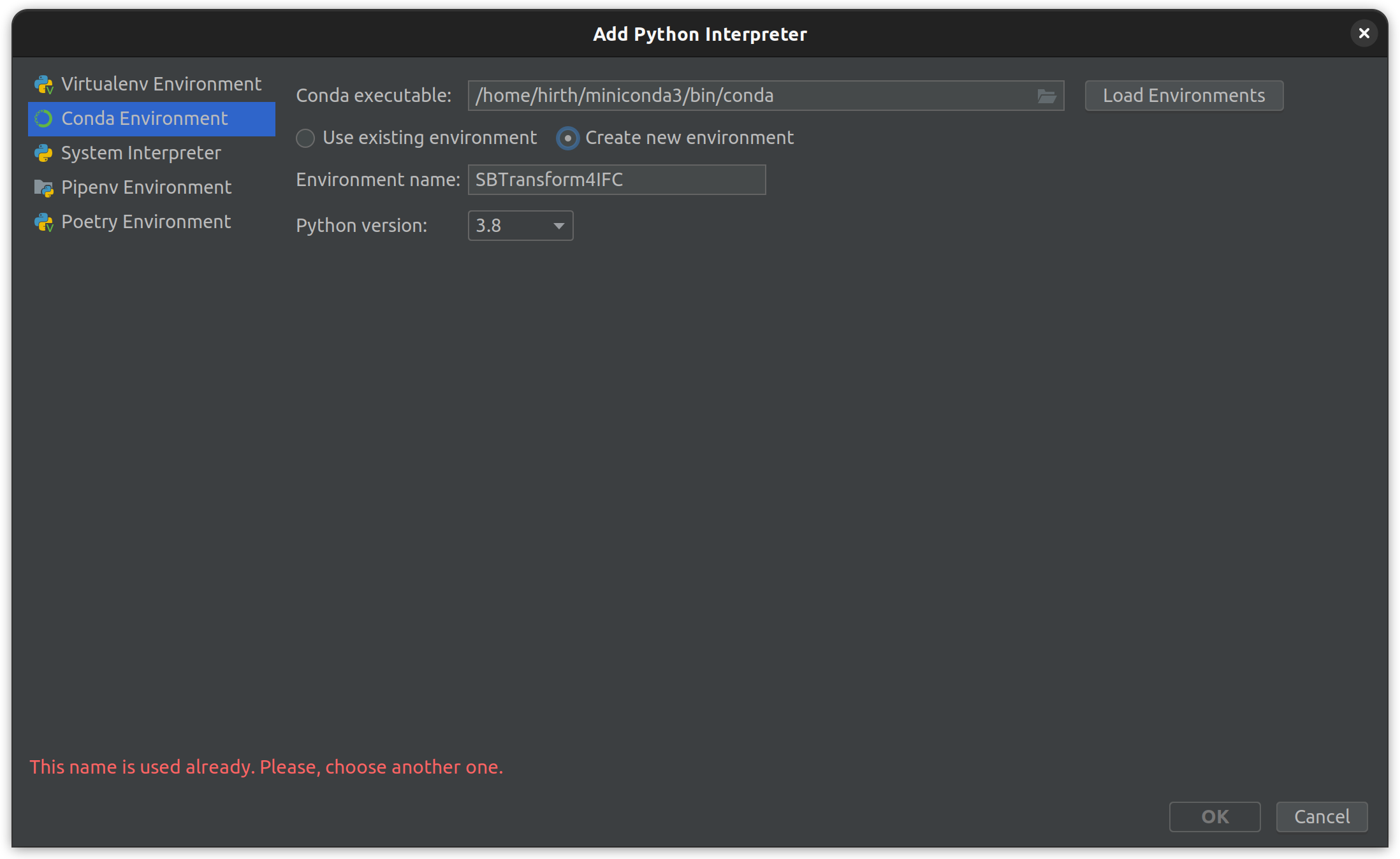Using conda in pycharm
We have had some problems with python packages and were forced to use conda to install packages.
Thats why I am making a short tutorial on how to use it properly.
How to
First make sure that you have properly installed anaconda or miniconda. In my case I would prefer to install minicoda. In Linux you can do it with some bash commands.
1
2
3
4
5
6
mkdir -p ~/miniconda3
wget https://repo.anaconda.com/miniconda/Miniconda3-latest-Linux-x86_64.sh -O ~/miniconda3/miniconda.sh
bash ~/miniconda3/miniconda.sh -b -u -p ~/miniconda3
rm -rf ~/miniconda3/miniconda.sh
~/miniconda3/bin/conda init bash
~/miniconda3/bin/conda init zsh
After that you are ready to go. Just restart the terminal and you should first run
1
conda install conda
In pycharm you can go under File > Settings to Interpreter settings. There you can click Add Interpreter
Choose Conda environment and in our case we choose Create new environment
Now your can automatically install conda packages in pycharm.
If some are not found just use the terminal and install them manually with the conda manager.
Since the conda solver has some slow and buggy solving. It is better to use a new one named libmamba
To install libmamba we need to do the following. The libmamba solver’s experimental flag has been removed. To use the new solver, update conda in your base environment:
1
conda update -n base conda
To install and set the new solver, run the following commands:
1
2
conda install -n base conda-libmamba-solver
conda config --set solver libmamba
Now we can install the pythonOCC-core with:
1
conda install -c conda-forge pythonocc-core
Since the solver had some problems with this and always froze in the process, we can now install pythonocc-core with libmamba.
Now we also install ifctransform and pythonocc-utils
1
conda install -c ifcopenshell ifcopenshell
Now comes the tricky part. Since pythonocc-utils are not part of the conda repository anymore, we need to build it locally.
First we clone the repository of pythonocc-utils
Then we are activating the conda envirement inside the terminal and use pip to manually build the library via the install.py in our environement.
1
python path/to/setup.py install
Now only a GUI-library is missing. We choose to install PyQt5 via pip since I’m lazy.
1
pip install PyQt5
Now the python script should run.

